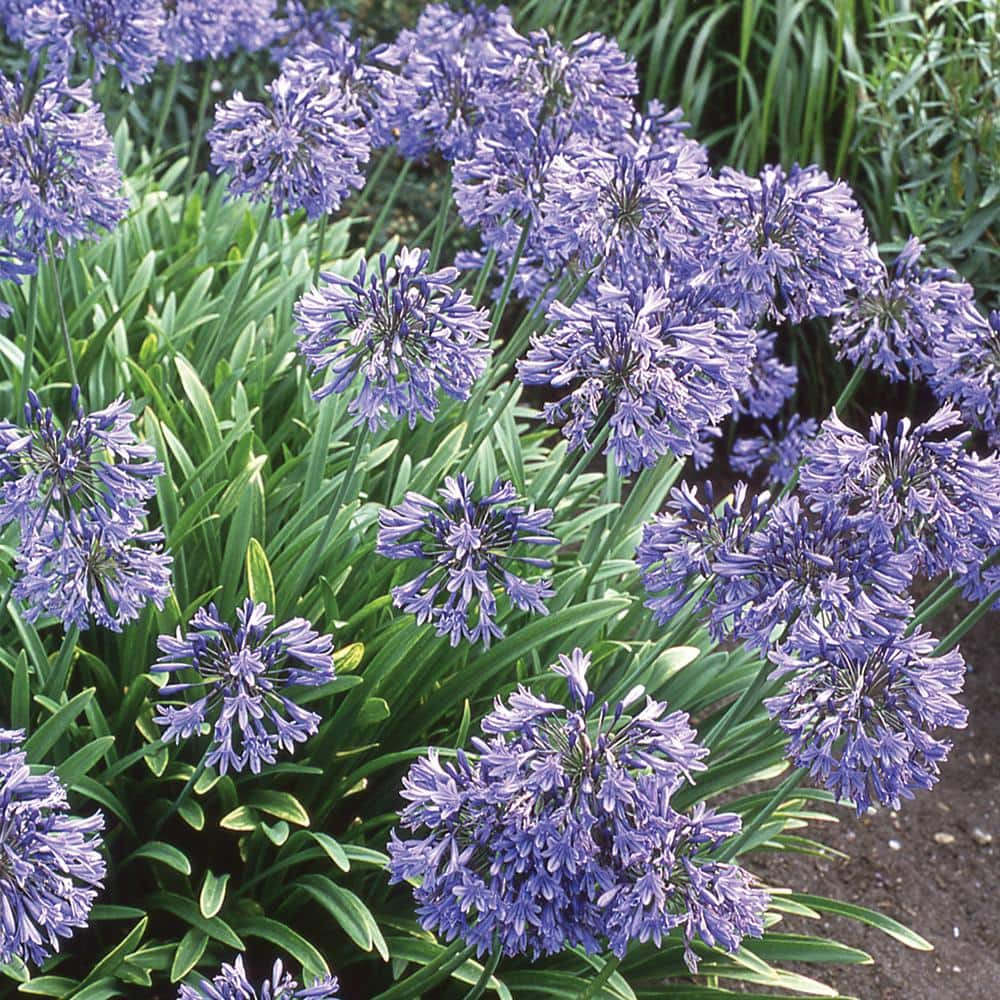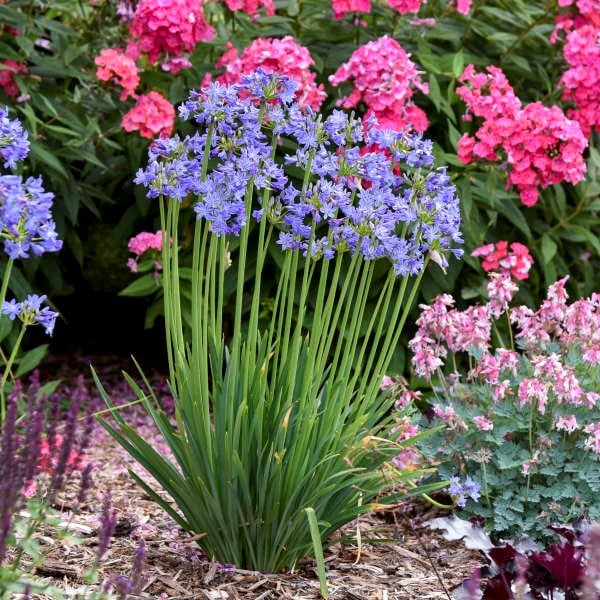Expanding Agapanthus: A Full Overview to Beautiful Blooms
Expanding Agapanthus: A Full Overview to Beautiful Blooms
Blog Article
Unleashing the Secret to Effective Agapanthus Cultivation: Advice for a Flourishing Garden
In the world of gardening, cultivating agapanthus successfully needs a strategic strategy that incorporates various aspects of plant treatment. With careful interest to information, one can open the secrets to nurturing these spectacular blossoms, bring about a garden that thrives with elegance and vibrancy. By recognizing the nuances of agapanthus cultivation, one can create an atmosphere where these plants thrive and grow abundantly. In the complying with conversation, we will discover essential pointers and tricks that will guide you towards a growing agapanthus garden, offering understandings right into finest methods, soil conditions, watering techniques, and extra.
Growing Agapanthus: Finest Practices
When planting Agapanthus, appropriate dirt preparation is important for making certain successful growth and advancement of these beautiful flowers. Agapanthus, commonly called Lily of the Nile or African lily, flourishes in well-draining soil with a slightly acidic to neutral pH degree - Agapanthus. Before growing, it is vital to modify heavy clay dirts with natural matter such as compost or peat moss to enhance water drainage and give important nutrients for the plants
To plant Agapanthus, choose a place that gets full sunlight to partial color, as this will promote healthy and balanced growth and abundant flowering. Dig a hole two times the size of the plant's origin ball and place the Agapanthus at the same depth it was formerly expanding. Delicately backfill the opening with dirt, pushing down strongly to get rid of any type of air pockets around the origins.
Water the recently grown Agapanthus thoroughly and continue to keep the soil equally wet, specifically during the plant's energetic growing period. Agapanthus. Using a balanced plant food once a month can further support the plant's development and flowering. By following these best methods for growing Agapanthus, you can create a magnificent display of these captivating flowers in your garden
Suitable Soil Conditions for Agapanthus
For optimal development and flowering success of Agapanthus plants, making sure the soil problems are optimal is essential. Agapanthus favors soil that is abundant in nutrients, so including a balanced plant food throughout the expanding season can promote healthy development and vibrant blooms.

Watering and Feeding Tips
To make certain healthy growth and vibrant blooms, appropriate watering and feeding techniques are essential for effective Agapanthus growing. Agapanthus plants benefit from regular watering, especially throughout the growing season. It is recommended to water deeply once a week, ensuring the dirt is wet but not soaked. Throughout heat or in pots, even more frequent watering may be required to avoid the dirt from drying entirely.
When it involves fertilizing Agapanthus, a well balanced fertilizer with equal components nitrogen, phosphorus, and potassium can be applied in the springtime to advertise healthy growth and blooming. Slow-release fertilizers are ideal for supplying nutrients slowly over an extended duration. Avoid over-fertilizing, as this can bring about extreme vegetation growth at the expense of blossoms.
Furthermore, incorporating natural matter like garden compost into the dirt can improve nutrient degrees and enhance soil framework, helping in the total health and wellness of the Agapanthus plants. By adhering to these watering and fertilizing suggestions, garden enthusiasts can ensure their Agapanthus plants flourish and generate stunning screens of blossoms.
Pruning and Deadheading Strategies
Correct pruning and deadheading strategies play an important duty in maintaining the wellness and visual appeals of Agapanthus plants, enhancing the essential methods of watering and feeding for successful growing. Trimming Agapanthus involves eliminating invested blossom heads, yellowing or dead fallen leaves, and total shaping of the plant to promote much better development. Deadheading, the procedure of removing faded blossoms, not just boosts the plant's appearance however additionally urges further flowering.
When deadheading Agapanthus, it is suggested to snip off the blossom stem at the base making use of sharp, clean shears. This process redirects the plant's energy from seed manufacturing back right into origin and vegetation growth, promoting a much healthier and much more robust plant. Routine deadheading can expand the growing duration of Agapanthus and prevent self-seeding, which can result in overcrowding.
In regards to pruning, Agapanthus generally gain from a light trim after blossoming to clean the plant and motivate fresh growth. Cutting down the spent flower stems and getting rid of any kind of dead or broken foliage aids keep the plant's vitality and overall appearance. However, it is necessary to avoid cutting right into the crown of the plant, as this can this content damage its health.

Protecting Agapanthus From Vermins and Diseases
Applying efficient parasite and disease management techniques is important to guarding the wellness and vitality of Agapanthus plants in growing. One common insect that affects Agapanthus is the Agapanthus borer, a caterpillar that tunnels into the plant, creating damage to the fallen leaves and flowers.
In addition to bugs, Agapanthus are prone to illness such as origin rot and fungal leaf places. By staying vigilant and addressing pest and condition concerns without delay, garden enthusiasts can assist their Agapanthus grow and flourish.

Verdict
To conclude, effective growing of agapanthus calls for correct growing methods, perfect dirt conditions, ample watering and fertilizing, routine trimming and deadheading, and security from pests and conditions. By following these methods and find here suggestions, gardeners can make sure a flourishing yard full of lovely agapanthus blooms. Agapanthus. Keep in mind to preserve regular treatment and attention to detail to advertise the health and longevity of these sensational plants
When growing Agapanthus, appropriate dirt prep work is important for making sure effective development and growth of these beautiful flowers.Water the recently grown Agapanthus extensively and continue to keep the soil uniformly wet, especially during the plant's energetic expanding period.For optimal growth and blooming success of Agapanthus plants, guaranteeing the soil problems are excellent is vital. When growing or hair transplanting Agapanthus, make sure the dirt is well-prepared to supply the needed foundation for the plants to establish themselves effectively. One common insect that impacts Agapanthus is the Agapanthus borer, a caterpillar that passages right into the plant, creating resource damage to the flowers and leaves.
Report this page